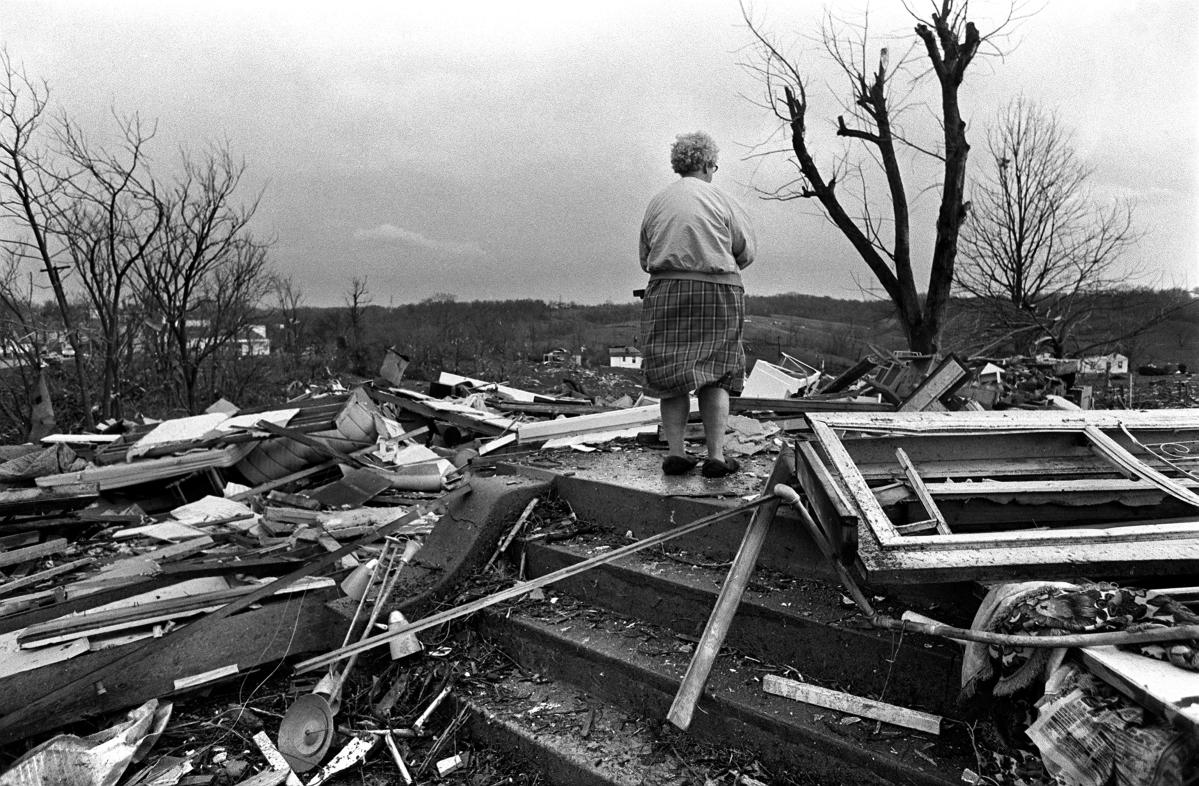Now that Ohio has broken the record for tornadoes in a single year, meteorologists continue to remind everyone that one year, no matter how remarkable, is not enough time to declare bad tornado seasons the new normal.
But what about 15 years?
An Enquirer analysis of National Weather Service data found that the number of tornadoes per year since 2010 is double the annual average of the previous 50 years.
From 2010 through May of this year, an average of nearly 32 tornadoes touched down in Ohio each year. From 1960 to 2009, the average was 16.
So far this year, 62 tornadoes have hit Ohio, tying the previous record set in 1992.
Scientists say these numbers are worth noting, but they aren’t convinced the big jump is as dramatic as it seems. They say weather patterns change from year to year and even decade to decade, so it’s too early to draw conclusions from the past fifteen years. In meteorological terms, the sample size is too small.
They also warn that it’s possible the increase in confirmed tornadoes has little to do with the weather. Instead, they say, the higher numbers could actually mean that people are getting better at spotting twisters that would have been missed years ago.
“What I always remind people of when we talk about tornado numbers is how tornado detection and technology has changed so dramatically,” said Seth Binau, a meteorologist with the National Weather Service in Wilmington.
New technology makes spotting Ohio tornadoes easier
Around 2010, around the same time confirmations of tornadoes began to increase, upgrades to Doppler radars across the country made it easier for meteorologists to detect cloud rotation and debris associated with tornadoes.
Where once a roof blown off a shed could be attributed to “wind damage,” new technology can reveal the culprit as a tornado.
Ohio’s 58th tornado this year, which touched down in rural Jackson County on May 26, is a case in point. By tornado standards it was small, classified as an F1 tornado with winds of about 90 miles per hour.
But Doppler radar and weather service surveyors soon confirmed that a tornado was responsible for damaging a tractor supply store and toppling a parked semitrailer. A few decades ago, this might not have been possible without an eyewitness.
Binau said another relatively new technology that has helped confirm that tornadoes are carried by millions of people every day: a smartphone. Video of a tornado captured on those phones not only makes for a compelling social media post, but can also tell a more detailed story about the tornado’s location, size and intensity.
“Maybe these tornadoes have always been around,” Binau said, “and we just didn’t know about them.”
While scientists say better detection may be the best explanation for the rising number of confirmed tornadoes, they acknowledge that changing weather patterns may also play a role.
Climate change is creating warmer, wetter conditions that are ideal for tornado-generating storms. And there are indications that these conditions may shift “Tornado Alley” — the vast area in the central United States where most tornadoes traditionally form — further east into an area that includes parts of Kentucky and Ohio.
But climate scientists are wary of making snap judgments based on tornado data collected over a period of 10 to 15 years. They say warming oceans, melting ice caps and long-term increases in temperatures around the world are much better indicators of climate change.
“Tornadoes are considered a more isolated weather phenomenon,” according to research published by Ohio’s State Climate Office. “So it’s difficult to link a single tornado to climate change.”
The numbers still vary greatly from year to year
Tornadoes are as unpredictable as they are destructive, making them difficult to factor into climate models that scientists use to predict changes in temperatures and other weather patterns associated with a warming global climate.
“It is extremely difficult to extract a signal of climate change from historical tornado counts,” said Michael Notaro, director of the Nelson Institute Center for Climatic Research at the University of Wisconsin.
He said most of the increase in tornadoes over the past fifteen years can be attributed to smaller F1 tornadoes, lending credence to the argument that better detection catches weak storms missed in previous decades.
Binau said it’s important to remember that the weather on any given day is just a snapshot and not necessarily part of a trend. A few warm days in themselves are not indicators of global warming, but 100 years of rising global temperatures tell a different story.
The same goes for tornado data. Even during the past fifteen years, as the total number of tornadoes increased, the number sometimes varied greatly from year to year.
In 2022, Ohio recorded 27 tornadoes. Last year the state nearly broke the record with 60. This year, at 62 and counting, a new record seems likely.
Binau said a few decades isn’t enough time to say for sure what it all means.
“This is a very complex conversation,” he said.
This article originally appeared on Cincinnati Enquirer: Tornadoes 2024: What’s behind Ohio’s record year?
